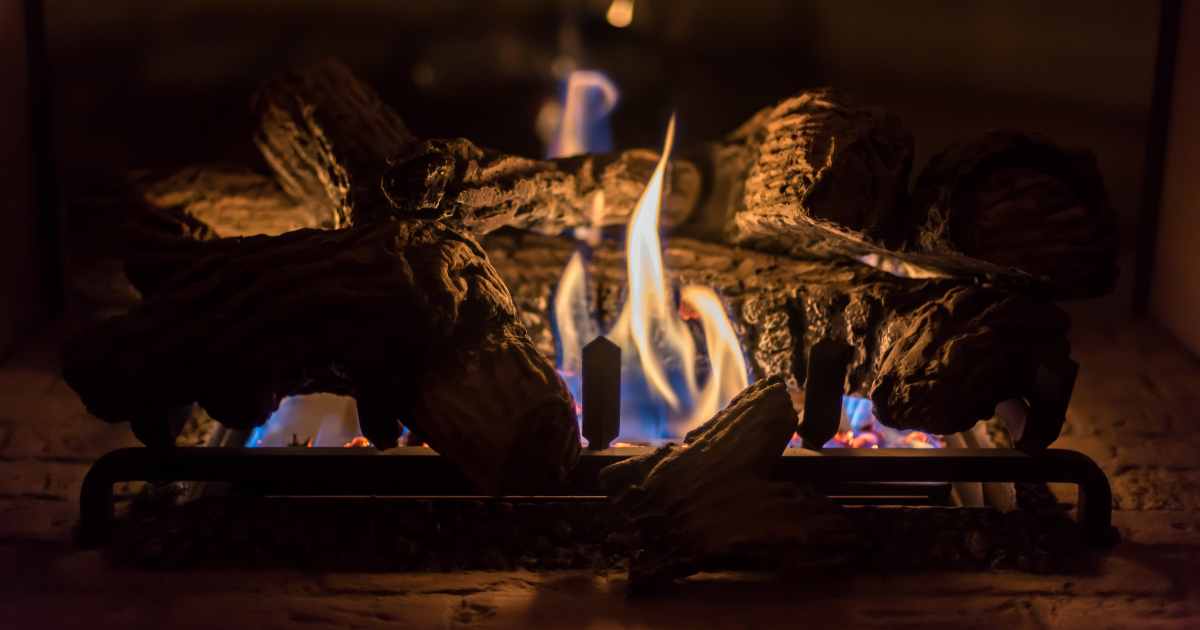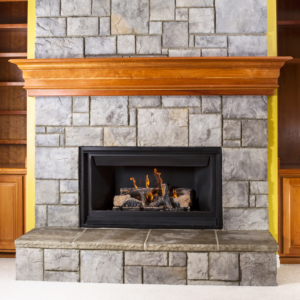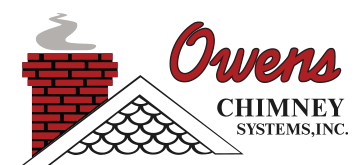If you’re considering purchasing a new gas fireplace, you might have noticed there are various types of gas logs you can choose from. While there are many size and styles to consider, the first big decision will be whether to utilize a vented or a vent-free option.
Since gas logs can be quite a sizable investment, this isn’t a decision you want to breeze over. Read on to learn more about their differences, pros and cons, and other important matters. Still have questions when you’re done? No problem. Reach out to our experienced crew for answers.
Vented Gas Logs
Vented gas logs produce the similar effects and ambiance as a traditional wood-burning system, and they require a chimney or vent to function.
Pros
✓ Aesthetically-Pleasing, Realistic Flames: Vented gas logs produce realistic flames that will look amazing in your gas fireplace. The flames are similar to burning firewood, so you won’t miss out on that classic ambiance.
✓ No Smell: Burning vented logs is basically scent-free. The emissions will go straight up your chimney, and you won’t have to worry about an unpleasant burning smell in your home.
✓ Lowered Risk of Gas Exposure: Because gases are being effectively vented out of your home, there’s less stress about carbon monoxide exposure – which is a concern for ventless options.
Cons
✗ More Fuel Consumption: Don’t be surprised when you see an increase in your gas bill, as vented gas logs consume more fuel than vent-free logs.
✗ Less Heat Than Vented Options: Vented logs can’t typically be used as a primary heat source. Because they’re hooked up to the chimney, you’ll have some heat loss. While you get a decent amount of warmth poured into your home, these aren’t quite as efficient as other appliance options.

Vent-Free Gas Logs
Vent-free gas logs do not require a vent or chimney to operate, and they are known for their great heat output. In regards to their aesthetic appeal, vent-free gas logs produce a blue-looking flame, similar to the flame produced in a gas range.
Pros
✓ Cost-efficient: Since vent-free gas logs do not require a vent or chimney, they cost less to install than vented gas logs.
✓ Produces More Heat: Heat will remain in your home when you use vent-free gas logs. This makes them a great option during the cold seasons, and can mean lower energy bills if you do zone heating.
✓ Safe To Use: Vent-free gas logs are equipped with a safety feature called an Oxygen Depletion Sensor (ODS) pilot assembly. This causes the system to turn off in the event of a drastic and dangerous drop in oxygen levels within the house.
Cons
✗ Lacking Visual Appeal: The flames in vent-free gas logs are blue, making them look artificial not not like a real wood-burning in a fireplace.
✗ Possible Gas Emissions: While they are equipped with a safety feature, vent-free gas logs still have the tendency to emit certain gases, such as nitrogen oxide, formaldehyde, and carbon monoxide. This is why you have to hire the best technicians when installing vent-free gas logs.
✗ Possible Odor: Unlike vented gas logs, vent-free logs may produce an odor that people with sensitive noses or allergies will immediately notice.
Why You Should Switch to Gas Logs
Whichever option you go with, you can count on reaping the following benefits:
 Easy to Use: Gas logs are easy to operate. With a mere push of a button or flip of a switch, you can turn it on and off. Compared to building, maintaining, and extinguishing a wood fire, this is a lot less effort on your part. You may also try models with remote control systems for added convenience.
Easy to Use: Gas logs are easy to operate. With a mere push of a button or flip of a switch, you can turn it on and off. Compared to building, maintaining, and extinguishing a wood fire, this is a lot less effort on your part. You may also try models with remote control systems for added convenience.- Heightened Efficiency: Using gas logs during the winter is an extremely efficient way to heat your home, and it tends to result in less heat loss overall. That means more comfort and lower energy bills – can’t beat that.
- Less Maintenance: Gone are the days where you have to sweep wood remains and ashes from your fireplace. You also won’t have to tend to a gas fireplace as often as you would with a wood system. Its wall thermostat can help you regulate temperature and adjust the flame size to your liking – easy peasy.
Reach Out to Our Experts
If you have any questions our knowledgeable staff at Owens Chimney Systems are ready to assist you. Give us a call today or reach out online to request more information. We’re here and happy to help you out!
